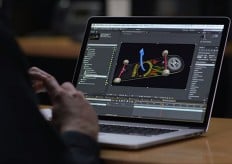Adobe unveils the future of rotoscoping in After Effects
Adobe recently released a video showing the evolution of rotoscoping techniques in After Effects.
As a reminder, rotoscoping is the creation of masks on the elements of a video, in order to isolate them from their background. It's used to have the same freedom as a shoot on green screen, but when there was no green screen on set.
20 years of rotoscoping evolution in After Effects
From the rectangular and oval masks of 1993, to the variables mask feathering of 2012 passing through Rotobrush in 2010, things have evolved. Below is the video showing all these evolutions:
A new Rotobrush on steroids
The last part of this video reveals a new version of the Rotobrush effect, which seems to be much more efficient. By defining a gross area with the brush tool, the automatic result looks very good. Currently, even if it saves a lot of time, you still have to do a lot of strokes to get a good matte.
The big change is in the new name of the effect: Rotobrush and Refine Edge.
A new section in the settings of the effect is dedicated to this new function, which seems much more efficient than the current cache improvement.
Curly hair, such as those used in the video are some of the most complicated thing to rotoscope. We must succeed in keeping the transparency within, which requires masks with a very detailled shades of gray. Manually, it's time consuming, and the result is often not terrible, due to significant mask feathering.
If this new refine edge technology (which seems inherited from the one of Photoshop) made ??this evidence, it could be a real time saver for rotoscoping.
I have one thing to say .. can't wait to try! This new effect may be available via an update for Creative Cloud members in the coming months? I hope so!
Want to go further? Other articles on the same topics:

amazing ))
wow!!
Video not there on my laptop. Has it been removed or is it a loading error at my end?